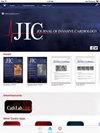儿童肺血管内异物经皮清除术。
IF 1.4
4区 医学
Q3 CARDIAC & CARDIOVASCULAR SYSTEMS
引用次数: 0
摘要
目的:本回顾性研究旨在评价儿童经皮肺血管内异物清除术的安全性和有效性。方法:这项单中心回顾性研究分析了13年来儿童肺部血管内异物清除术的病例。结果:共9例患儿,平均年龄8.6岁。最常见的异物是导管碎片(n = 7),异物取出成功率为100%,仅有1例出现短暂性心律失常并发症。结论:初步结果提示经皮取出术是一种安全有效的儿童肺血管内异物清除方法。本文章由计算机程序翻译,如有差异,请以英文原文为准。
Percutaneous removal of pulmonary intravascular foreign bodies in children.
Objectives: This retrospective study aims to evaluate the safety and efficacy of percutaneous removal of pulmonary intravascular foreign bodies in children.
Methods: This single-center, retrospective study analyzed cases of pulmonary intravascular foreign body removal in children over a 13-year peiod.
Results: There were a total of 9 children, with a mean age of 8.6 years. The most common foreign bodies were catheter fragments (n = 7). The success rate of foreign body retrieval was 100%, with only one case of transient arrhythmia as a complication.
Conclusions: Preliminary findings suggest that percutaneous retrieval is a safe and effective method for removing pulmonary intravascular foreign bodies in children.
求助全文
通过发布文献求助,成功后即可免费获取论文全文。
去求助
来源期刊

Journal of Invasive Cardiology
CARDIAC & CARDIOVASCULAR SYSTEMS-
CiteScore
2.90
自引率
6.70%
发文量
214
审稿时长
3-8 weeks
期刊介绍:
The Journal of Invasive Cardiology will consider for publication suitable articles on topics pertaining to the invasive treatment of patients with cardiovascular disease.
 求助内容:
求助内容: 应助结果提醒方式:
应助结果提醒方式:


